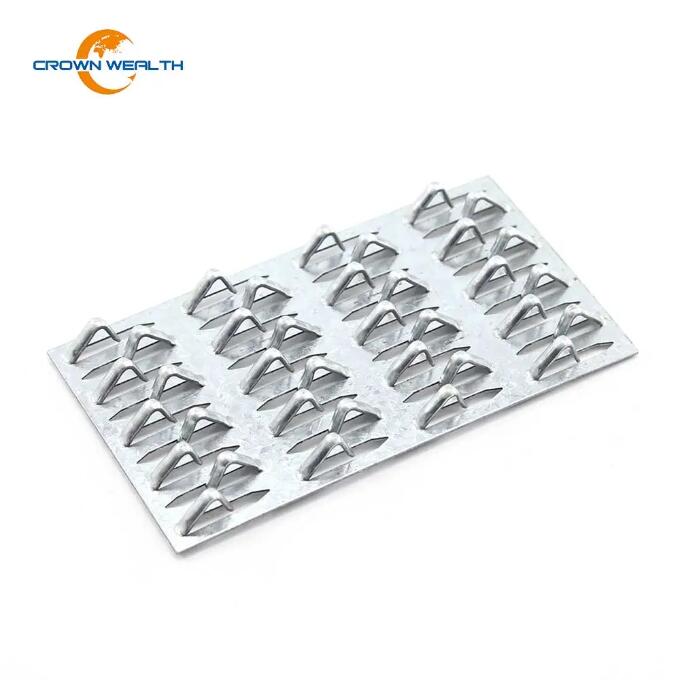Key Specifications/ Special Features:
gang nail plate /mending plate
Construction Timber Connection Double gang nail plates
Galvanized Knuckle Truss Nail Plate
Material: galvanized steel
Process: Stamping/Punching/Bending
Size: Can be customized
Surface: Galvanized sheet
Type: Wood connector
Quality: MOQ 2000pcs
Packaging: General standard export packing/Accept customized packaging
Specifications
Mending plates
Gang-Nail connector NAIL PLATES – STANDARD & SPECIAL;
Hammer Fixed, Easy to Use Nail plates for Many Applications;
Description:
Gang-Nail Connector Nail plates are available in a wide standard range as the tabulated opposite. Larger sizes are available on request.
Other forms of this plate could be developed given sufficient demand for the product.
Features:
1. Gang-Nail connector Nail plates are galvanized steel connectors with in-built, bent-up nails.
2. These plates are ideal for many structural and nonstructural timber jointing and timber protection uses.
3. Applied simply by hammering in the “knuckle nails”these plates are used by tradesmen, home owners, frame and box manufactures, electricity supplyauthorities and builders.
4. Special pressingequipment is not necessary.
A truss connector plate is a kind of tie. Truss Plates are light gauge metal plates used to connect prefabricated light frame wood trusses. They are produced by punching light gauge galvanized steel in order to have teeth on one side. The teeth will allow to join different trusses together by being embedded into the lumber using an hydraulic press or a roller.
A truss connector plate is manufactured from ASTM A653/A653M, A591, A792/A792M, or A167 structural quality steel and is protected with zinc or zinc-aluminum alloy coatings or their stainless steel equivalent. Metal connector plates have integral teeth and are manufactured to various sizes (that is, length and width) and thickness or gauges and are designed to laterally transmit loads in wood. They are also known as stud ties, metal connector plates, mending plates, or nail plates. However, not all types of nail plates are approved for use in trusses and other structurally critical placements.
Nail plates are used to connect timber of the same thickness in the same plane. When used on trusses, they are pressed into the side of the timber using special hydraulic tools. As the plate is pressed in, the nails are all “driven” simultaneously and the compression between adja.
Post time: Oct-10-2022
